How To Set Up My Peloton Shoes
Many riders give their cleat position perfunctory treatment. Later all, what'south to contemplate? You place the cleat nether the ball of your foot and motion on, right?
Not so fast. Where and how your cleat is placed non just impacts how much ability you can put into your pedals—something you lot definitely want—simply as well impacts your hazard for hurting or injury—something y'all definitely don't want.
This is truthful even, and maybe especially, if you're riding a bike that'due south not going anywhere, like a Peloton, because you're in a very fixed position, with no coasting, cranking out more 5,000 revolutions per hr, says concrete therapist and bike fit specialist Kevin Schmidt, owner of Pedal PT in Portland, Oregon, who does home fittings for Peloton owners in his expanse.
"I had a client who did a virtual bicycle fit with Peloton, and they said he was adept to go only he was all the same getting hip, It, and knee pain. So he made an appointment for me to come up to his home and investigate, and his cleats were misaligned. It's difficult to diagnose modest rotations or general cleat placement over a virtual fit. But information technology makes all the departure," Schmidt says.
Fine tuning your cleats can also give y'all some easy speed, says Steve Hogg, a world renowned expert on cycling fit from Canberra, Australia, who has fit endless WorldTour pros and trained elite bike fitters.
"I have ane elite client who, later major changes in cleat position, improved his personal best over a 43K time trial past 3 minutes," Hogg says. "Nigh riders can make a positive departure in their functioning with a change in cleat position." You can, as well.
→ Get Bicycling All Admission for the latest cycling and health tips!
Showtime, Detect the Ball of Your Foot
The ball of your foot is the reference point for cleat placement. To notice the brawl of your foot, offset locate the articulation at the base of your big toe, as well known as the get-go metatarsophalangeal joint, or MTP. Using this equally your starting betoken, imagine a line connecting this first MTP to the base of your pinky toe, or 5th MTP joint.
"That angled line creates the ball of your foot," Schmidt says. "Some people have a larger, steeper bending. Some people have a smaller, less-steep angle. It'southward unique for every pes. You lot'll want to bifurcate that line with the pedal spindle as your starting point." In other words: Aim to get the commencement MTP in forepart of the pedal spindle and the fifth MTP backside information technology, so this imaginary line is bisecting with the spindle.
Adjust Fore and Aft for Condolement, Power, and Riding Style
Now decide your fore/aft (a.one thousand.a. front end to back of the shoe) position. That positioning uses the brawl of your foot equally the initial reference indicate.
Your calves piece of work hard stabilizing the foot on the pedal during cycling; cleat position fore and aft affects just how difficult. The further forward the cleat, the harder the calves demand to work. Having them forward does, however, allow you to apply higher peak torque to your pedals. The key is finding the right position that will provide the torque you demand without the calf fatigue you don't.
"I've found over many years and thousands of customers that the great majority of riders perform meliorate with the ball of the human foot in front of the pedal beam on a conventional shoe," says Hogg, who recommends the following placement as a starting point.
- Shoe sizes Euro 36 to 38: center of ball of foot 7 to ix millimeters (mm) in front of the center of the pedal axle
- Shoe sizes Euro 39 to 41: 8 to 10 mm in front end
- Shoe sizes Euro 42 to 43: 9 to eleven mm in front
- Shoe sizes Euro 44 to 45: x to 12 mm in front
- Shoe sizes Euro 46 to 47: 11 to xiv mm front
- Shoe sizes Euro 48 to 50: 12 to sixteen mm in front
Depending on what kind of riding y'all do, you tin can try adjusting your cleats accordingly (see below). This advice is also applicable for stationary cyclists (think: your indoor trainer, Peloton or similar bike) depending on what kind of stationary riding you do most.
→ Pure sprinter (rails, short/HIIT workouts): Move the cleats forward from the recommendations above. Endurance isn't a major factor in sprinting and so calf fatigue isn't an event.
→ Road racer (crits, 24-hour interval races): Move cleats so that the pedal axle is a flake behind the ball of the pes (equally recommended in the chart) to relieve the calves. This is especially true if y'all are a road racer who likes to get into the break and launch some attacks before the sprint. Rearward cleats will let your big muscles to work better while keeping the calves fresher for the long haul.
→ TT passenger, distance rider, gravel rider, and/or mountain biker: If you need to ride hard and/or long and have lilliputian need for sudden dispatch, movement them even further back toward the mid-foot. Some riders find this position besides helps them eliminate "hot foot," numbness and tingling, and other painful foot conditions that arise from pressure on the feet.
Remember, if you take any discomfort, nudge the cleats back until you lot find comfort, just if you move the cleats back any meaningful corporeality, you will need to drop your saddle accordingly, says Hogg.
Line Upwardly Your Cleats
Finally, you lot desire to set your cleats at the proper bending. In general, you want them positioned so the toe of the cleat is pointing inward a tiny bit, which allows the heel to rotate inward while pedaling. Shoes often have guidelines on the sole to assistance you line them upward just so.
"Laterally rotated cleats is the number one event I see when I go into people's houses to do a plumbing equipment for their Peloton," Schmidt says. "They oft look at the curvature of the shoe and attempt to line it up with the 'curve' or the sole of the shoe, but even a pocket-sized caste of lateral rotation tin cause your heels to kick out and your knees to turn in, which can lead to joint stress."
Most cleats incorporate at to the lowest degree 5 degrees of "float," significant they allow for a flake of natural rotation, and so this general starting position will piece of work for the majority of riders. If your feet plough markedly inward or outward, however, you lot'll need to adjust your cleats to be more in line with your foot's natural, anatomical position, and then your hips and knees work in their normal range of motion.
Importantly, you don't want your heel or ankle hit the crank at any point while pedaling. To fine-tune cleat angle, Hogg recommends the following procedure:
While riding at a brisk pace, stop pedaling and declension with the right foot forward. Endeavour to move your heel inward. Is there available movement? If no, stop and suit the cleat to allow the front of the cleat to face a bit further toward the inner edge of the shoe, and so retest until at that place is available move. One time you have available movement from your natural placement nether load, echo the pedal and declension examination, but this time, endeavour to move the heel outward. Is there available movement? If the answer is no, stop and conform the bending of the cleat and so that the nose of the cleat faces a chip further to the outside of the shoe. Retest until the amount of heel movement in and out of your natural rotational angle is fairly even. Then echo on the other foot.
Fix the Stance
Opinion is the distance between your anxiety when you're clipped in. It's adamant by the cranks, the number of front chainrings, and bottom bracket width, in addition to where the cleat is set with respect to the inner and outer edges of the shoe.
Every pedal system has a way to allow y'all to dispense the stance width at least a few millimeters. When you movement the cleats laterally to the outside of the shoe, the foot volition be positioned more inward on the pedal, narrowing the width of stance. When you lot move the cleats medially to the within (towards the curvation) of the shoe, the foot will be positioned outward on the pedal, and widen the width of stance.
Generally speaking, you desire to position your stance so your feet feel similar they're underneath your knees and your hips, knees, and feet maintain salubrious alignment as you pedal. If you're feeling pressure on the exterior of your foot, or feel similar you are pedaling with the outside of your foot, information technology also may propose your stance needs to exist widened, as your foot is trying to widen the stance.
If y'all accept tight hips and it's difficult for you to bend your knee by ninety degrees, moving the cleats to widen your opinion and open the hips can help (as can raising the saddle), Schmidt says. If you tend to take It band pain, you lot might as well want to widen your stance, or perchance lower your saddle.
If you're riding a bike with a triple chainring or a fat bike that puts your anxiety out in a broad opinion, you may demand to move your cleats closer to the outer edge of the shoe to bring your feet back into a narrower, more comfy and natural range.
When to Come across a Pro
Most people can position their cleats where they need them on their own. Only if you take any incertitude or are running into any discomfort and/or hurting, definitely brand an appointment and get a full cleat and bike fit from a pro.
"Considering you're connected to your pedals, where yous position your cleats has a meaning touch on your bike fit and overall comfort," Schmidt says.
Anything that is off, even a tiny bit is then further magnified the longer you ride due to repetition, so it'southward best to get information technology correct to nip whatever issues in the bud before you run into bigger issues down the road.
This content is created and maintained past a third party, and imported onto this page to assist users provide their email addresses. You may be able to find more than information nigh this and similar content at piano.io
Source: https://www.bicycling.com/skills-tips/a36342419/how-to-set-up-cycling-cleats/

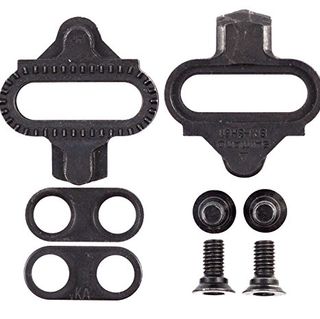
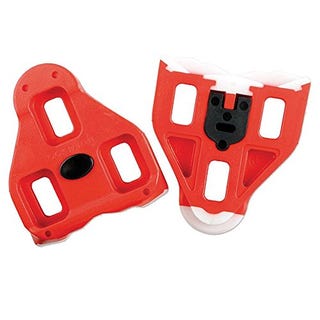
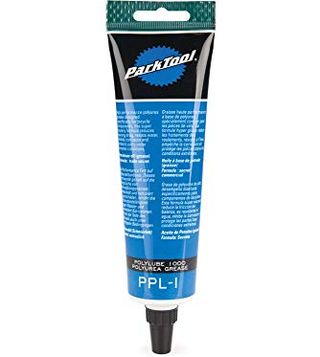
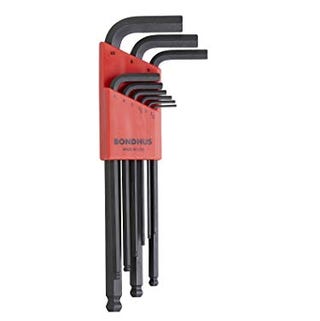
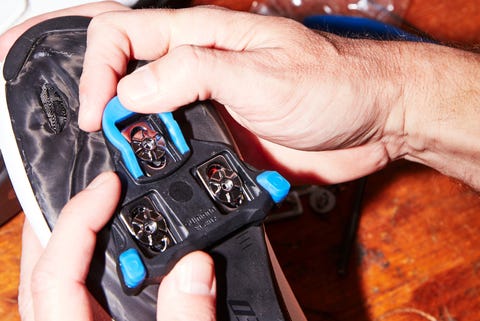
0 Response to "How To Set Up My Peloton Shoes"
Post a Comment